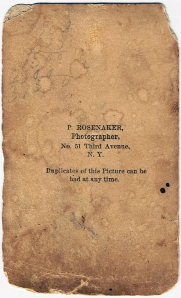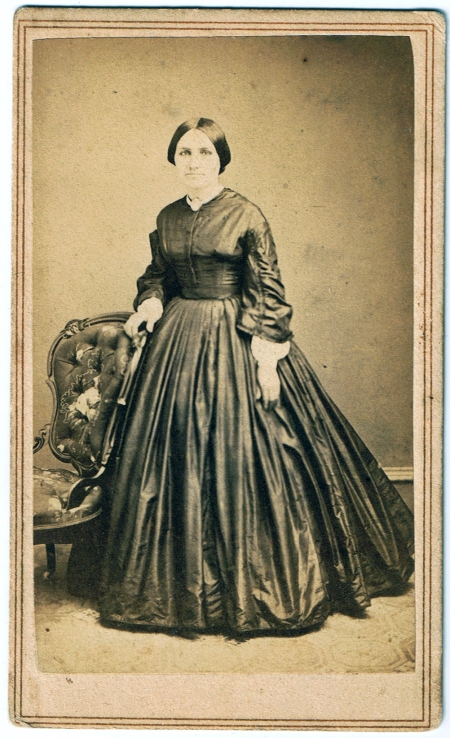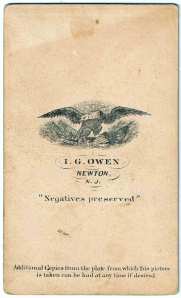
CDV: Large Woman in Silk Dress, c. 1860-62

CDV: Large Woman in Silk Dress, backmark
Backmark: “P. Rosenaker, Photographer, No. 51 Third Avenue, N.Y.
Date: c. 1860-62
Subject: Woman Standing
Location: New York, NY
Dress: One piece, attached bodice and skirt with “pagoda” style sleeves. Silk, plain weave. Opens up center front with concealed hooks and eyes. Bodice is dart-fitted; darts are very high and from the slight puckers at bust level, it appears that they let out (i.e. are not sewn to the tip of the dart) The bodice is poorly fitted, note the horizontal wrinkles caused by being too long and too narrow for her corseted torso.
Sleeves are trimmed with ribbon or ruching along the cuff and up to the armscye. Decorative buttons up front placket.
The skirt is attached to the bodice with knife pleats (possibly gathers, it is not clear). The skirt ends about 4-6″ from the floor in front and is bound at the hem with wool braid. Note how narrow the skirt is in relation to the cage crinoline supporting it.
Her collar is about 3″ wide, which indicates an earlier date (1850s) but she may simply have been out of fashion. Her hair is in a style typical of the early 1860s. She also wears undersleeves and a brooch at center front/neck and earrings.
Hair: Center parted, combed down behind her ears. Bound rather low on the nape of her neck in a coil.












